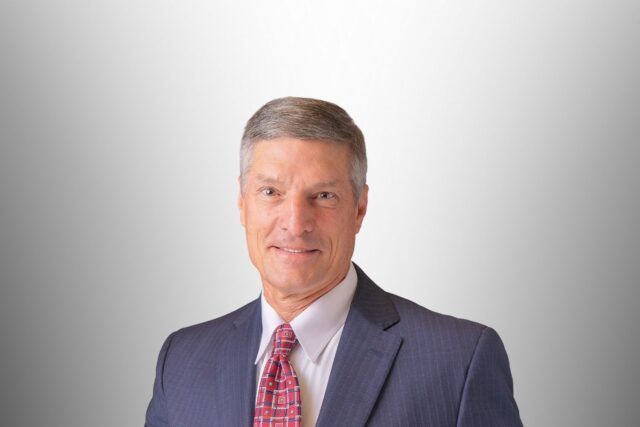The impossible maths of sustainable aviation: Why only the atmosphere can fuel our future

Jean-Philippe Hiegel is the VP Strategy & Growth at RepAir Carbon and has deep expertise in carbon capture and storage, carbon dioxide removal, large project development, and decarbonization strategy. At RepAir, he leads business development, international partnerships, and commercial scaling of its electrochemical carbon capture technology.
Aviation accounts for 2.5% of global energy-related CO2 emissions – nearly a gigaton annually – and is growing faster than rail, road or shipping. This sector represents one of the most challenging to decarbonise.
As the International Energy Agency notes, reaching net-zero will require “revolutionary” designs, including alternative propulsion technologies such as electric or hydrogen-powered aircraft.
However, battery electric propulsion is currently limited to very small aircraft and short ranges. Using hydrogen poses significant challenges: innovative fuel storage and delivery methods, low-cost lightweight cryogenic tanks, and redesigned airframes to accommodate them. Questions about hydrogen’s impact on contrails remain unanswered, with dedicated studies still underway.
This technological reality makes sustainable aviation fuels (SAF) critical to decarbonising aviation now. Yet here too, there’s a fundamental constraint that needs to be addressed – and urgently.
SAF from biogenic feedstocks has fundamental limits
While the EU has set ambitious SAF blending targets – 2% this year, rising to 6% by 2030 and 70% by 2050 with a synthetic fuel sub-mandate of 1.2% by 2030 and 35% by 2050 – the industry’s current approach relies heavily on biogenic CO2 from crops, agricultural waste and other biological sources. And biogenic feedstocks have inherent limitations that make these targets mathematically impossible.
The EU’s RefuelEU regulation excludes SAFs produced from food and feed crops due to sustainability concerns. While biojet kerosene from animal fat and waste oil feedstocks are included, their growth potential is limited by supply.

More abundant feedstocks could come from agricultural residues, dedicated energy crops and municipal solid waste – but even these face constraints.
First, cultivating crops for fuel creates direct land use competition with food production or requires land conversion. Second, and more critically, biogenic sources are finite.
Meeting the EU’s 2050 SAF targets through biogenic sources alone would require between 7% and 18% of today’s EU agricultural land, depending on the feedstock. It’s both impractical and impossible at the scale needed.
Even if we maximised every available biogenic source globally, we’d fall short of the gigatons of CO2 needed for aviation fuel production by 2050.
This is where atmospheric CO2 becomes essential.
Direct Air Capture: Sustainable aviation fuel from the sky
Direct Air Capture (DAC) allows us to capture CO2 needed to produce e-SAF – synthetic fuels made by combining atmospheric CO2 with green hydrogen produced by electrolysers run on low-emissions electricity through processes like Fischer-Tropsch or methanol-to-jet conversion.
The key advantage is unlimited feedstock: the atmosphere contains all the CO2 we need. We’re not talking about offsetting here – this is about recycling; creating a circular carbon economy where aviation’s emissions become tomorrow’s fuel.

RefuelEU Aviation regulation already recognises this distinction, segregating between biogenic SAF and e-SAF from direct air capture. This is an acknowledgement that atmospheric carbon represents a fundamentally different resource with fundamentally different potential.
What makes this pathway particularly promising is also infrastructure compatibility. Airports in Rome and Paris are already preparing for e-fuel supply chains. Unlike hydrogen or electric alternatives that would require complete infrastructure overhauls, e-SAF uses existing fuel systems.
That’s a massive advantage for an industry that needs solutions now, not in ten years.
Cutting the cost of carbon capture through electrochemical innovation
The cost challenge is real but not insurmountable. Traditional DAC technologies have struggled with high energy requirements – often consuming 2,500 kWh or more per tonne of CO2 captured.
But innovation is rapidly changing this equation. New electrochemical approaches can achieve up to 70% lower energy consumption compared to conventional thermal-based systems.
By eliminating the need for high-temperature processes and chemical solvents, these technologies can reduce both operational costs and capital requirements. When you factor in mass manufacturing potential using standard materials rather than exotic components, the path to cost-competitive atmospheric CO2 becomes clear.

The same innovation curve that brought battery costs down by 90% over the past decade is beginning to transform DAC.
But we need to be honest about the challenge: the entire e-SAF value chain – from DAC to hydrogen production to fuel synthesis – requires substantial energy inputs. Current e-SAF costs five to six times more than conventional jet fuel.
Building a SAF production plant takes 10 to 20 years to reach full operational scale. This is why it’s a day-one challenge. The plants we need operational in 2040 must break ground today.
Aviation’s sustainable future must include atmospheric carbon
The truth is that from a pure energy efficiency standpoint, the numbers might favour simply capturing CO2 and storing it underground.
But Europe – and other countries such as the UK, Brazil and Japan – have chosen a different path, for better or for worse: pushing the industry to innovate beyond the World War II-era Fischer-Tropsch process, to find new pathways that make recycled carbon economically viable.
For this to happen, I believe three critical developments must happen:
- First: Reinforce supply-side and demand-side policies to scale up e-SAF production and offtake
- Second: Tax aviation fuels according to their climate impact, acknowledging that only a minority of the world flies
- Third: Position aviation as a lead market to bring nascent decarbonisation options to commercial scale. Actions from leading airlines and airports that serve as key international and domestic hubs can generate the market pull needed to catalyse the adoption of efficient operations and best-in-class technologies
E-SAF from atmospheric CO2 doesn’t compete with biogenic SAF – we need every sustainable fuel source available, but only atmospheric carbon offers the unlimited scale required for aviation’s future.
It’s time we acknowledge that aviation’s sustainable future depends on turning the sky itself into our fuel source.
















